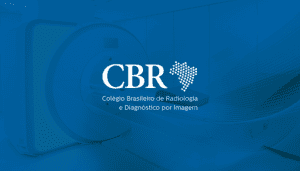1. Minimize the chance of exposures:
When scheduling tests and appointments for routine medical care (preventive, elective) instruct patients to discuss the possibility of rescheduling, especially if they have symptoms of a respiratory infection (eg, cough, sore throat, fever).
If the patient needs to undergo tests, establish a triage and ask that they be informed of any symptoms of respiratory infection so that appropriate preventive actions can be taken (face mask at the entrance and during the visit).
2. Consider limiting entry and transit points for patients with symptoms of respiratory infection. Identify a separate, well-ventilated space that allows these waiting patients to be isolated and have easy access to respiratory hygiene supplies.
3. Take steps to ensure that patients and staff have access to hand hygiene supplies at health facility entrances, waiting rooms and care areas.
4. Use visual alerts (signs, posters, etc.) at the entrance and in strategic locations (eg waiting areas, elevators, cafeterias, etc.) to provide patients with instructions (in appropriate languages) on hand hygiene, respiratory hygiene and cough etiquette. Instructions should include how to use tissues to cover your nose and mouth when coughing or sneezing, disposing of contaminated tissues and items in waste containers, and how and when to perform hand hygiene.
5. Provide specific information and training on transmission prevention for all health facility personnel (doctors, nurses, technicians, housekeeping, laundry, maintenance, students, administrative staff, and others).
6. Hand hygiene:
Healthcare professionals should perform hand hygiene before and after all patient contact, contact with potentially infectious material, and before putting on and removing personal protective equipment, including gloves. Wash your hands with soap and water for at least 20 seconds or use specific products based on alcohol with a concentration of 60-95%.
7. Personal Protective Equipment (PPE):
Personnel involved in care and contact with patients must have access to PPE, receive training and demonstrate an understanding of: when to use PPE, what PPE is required, how to properly don, use and remove PPE in order to avoid self-injury. contamination, how to properly disinfect or disinfect and maintain PPE, and PPE limitations.
Training of professionals involved in putting on and taking off PPE is recommended. There is evidence that the greatest chance of infection occurs in the process of improper removal of these materials.
Recommended PPE when caring for a patient with known or suspected SYMPTOMATIC COVID-19 include:
The. Respirator or Face Mask
The patient must be wearing a simple surgical mask when entering the examination area. The goal is to reduce droplet transmission.
Wear a face mask before coming into contact with patients with respiratory symptoms. It is recommended that these guidelines be updated frequently based on guidance from health authorities.
Face masks must be removed and discarded after leaving the patient room or care area and closing the door. Perform hand hygiene after discarding the face mask.
B. eye protection
Goggles or a disposable face shield that covers the front and sides of the face when entering the patient room or care area. Eyeglasses and personal contact lenses are not considered adequate eye protection. Remove eye protection before leaving the service area.
These PPE are only recommended for carrying out procedures such as punctures or interventions.
w. Gloves
Put on clean, non-sterile gloves when entering the care area. Remove and discard gloves when leaving the care area and immediately perform hand hygiene.
d. aprons
Put on clean isolation clothing when entering the patient area. Remove and dispose of the apron in a dedicated container before leaving the service area. Non-disposable aprons must be washed after each use. Give preference to the disposable apron.
8. Implement environmental infection control
All non-dedicated, non-disposable medical equipment used for patient care must be cleaned and disinfected in accordance with the manufacturer's instructions and facility policies. Ensure that environmental cleaning and disinfection procedures are followed consistently and correctly.
Management of laundry, food service utensils and medical waste must also be carried out in accordance with protective care.
Disposal of material must follow health surveillance standards.
9. Collaborators and Employees
In hospitals that care for patients with confirmed COVID-19 infection, consider placing part of the health team working remotely to avoid simultaneous contamination of a significant part of the professionals, making it difficult to maintain the operation of the service.
Services that provide medical care should implement sick leave policies for professionals who show symptoms of respiratory infection, flexible and consistent with public health guidelines.
Click here and download this material in PDF.
Sources:
- https://www.cdc.gov/coronavirus/2019-ncov/infection-control/control-recommendations.html?CDC_AA_refVal=https%3A%2F%2Fwww.cdc.gov%2Fcoronavirus%2F2019-ncov%2Fhcp%2Finfection-control.html
- https://www.who.int/emergencies/diseases/novel-coronavirus-2019/technical-guidance/infection-prevention-and-control
- https://www.jacr.org/article/S1546-1440(20)30150-2/pdf
- Coronavirus and Emergency Medicine. http://abramede.com.br/wp-content/uploads/2020/03/POSICIONAMENTO-ABRAMEDE-CORONAVIRUS-03-10032020.pdf
- Newsletter of the Brazilian Society of Infectology. https://drive.google.com/file/d/1X0AxDYIOVPjzBK8qauFkFMDi9a74iq7H/view




